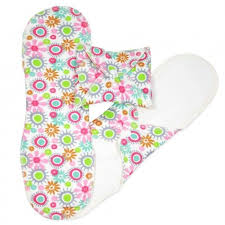 Only people (and rhesus monkey, chimpanzee, gorilla) have a monthly cycle of menstruation.
Only people (and rhesus monkey, chimpanzee, gorilla) have a monthly cycle of menstruation.
Nowadays, there are sanitary pads disposable, panty liners, tampons.
To around 1960 women in the west use (cotton or) flannel strips which were boiled regularly.
The exterior can be made of nylon (waterproof).
In principle, all -absorbing materials can be used for this purpose.
A more sustainable alternative is a menstrual cup, first patented in 1932. This is a calyx that is inserted approximately as a tampon in the vagina to absorb menstrual blood. Up to 30 ml. Women lose 30 to 60 ml of blood per menses. Two to four times a day you empty the cup into the toilet. After cleaning, you can put it back. The cup should be emptied and cleaned at least after twelve hours. It can also be worn at night, and during e.g. swimming and sauna. They are made of silicone or rubber, and odorless.
Chuckles: tampon with itching powder.
Diaper
A Western baby used during his career 4 to 5,000 diapers, or about 1,000 kilograms of waste (excluding incontinence stuff as elderly). Accounting costs and environmental impact (production, transportation processing) are folded cotton diapers with safety pins or diaper pants worth considering. Especially with a paper insert sheet to deposit the contents in toilet, trash, manure or compost heap, worth considering this. Especially if you wash environmentally friendly, and they are also used for a 2nd child, and / or later handed to others.
